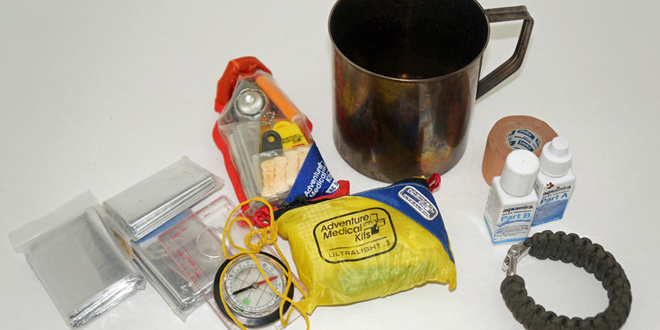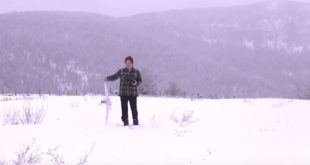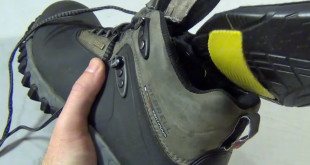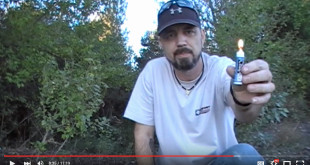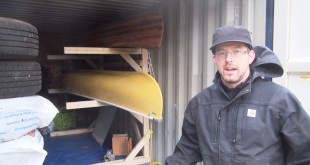First of all, a survival kit is designed to help you survive… for short periods of time. The idea is that in an emergency, your survival kit should keep you safe, providing for your needs until rescuers can find you or you can make your way out on your own. The reality is that we’re not likely to ever need most of the things in it, but they’re there for the JIC (Just in case) situations. I’ve already made a survival kit for my daughter that was suited to her ability, but in an effort to make my own kit, I’ve done some research on what other people recommend.
Today, I thought I’d present 3 sets of recommendations that I’ve come across. Please comment and tell me what your thoughts are and where these kits could be improved. A question: Is weight and size worth the sacrifice of some of these items? Can some dual purpose items be substituted?
JOHN WISEMAN’S KIT
First off, Let’s look at What is recommended by John “Lofty” Wiseman in his book the SAS survival handbook. It’s probably the biggest and at 2 parts is probably meant to last you more than 72 hours.
- Matches (waterproof)
- Candle
- Flint
- Magnifying glass
- Needles and thread
- Fish hooks and line
- Compass (button)
- Beta light (tritium illumination)
- Snare wire
- Flexible saw (chain saw)
- Medical kit – Analgesic, immodium, antibiotic, antihistamine, water purification, anti-malaria, potassium permanganate
- Surgical blades (for scalpels)
- Butterfly sutures
- Plasters (band-aids)
- Condom (for water storage – holds up to 1 liter)
He also recommends a separate survival pouch to keep on your person containing:
- Mess tin (cooking utensil)
- Fuel (solid fuel tablets)
- Flashlight (pencil style)
- Flares (signaling)
- Marker Panel (fluorescent 0.3×2 meters for signalling)
- Matches (in a waterproof container)
- Brew Kit (tea, milk and sugar)
- Food (high in fat, long lasting, with salt)
- Survival bag (large plastic/polythene bag)
- Log book
LES STROUD’S KIT
I can’t remember where I pulled this list from, but this is what he recommended as a minimum. This is considered to be lightweight and seasonal.
- Tin for boiling water in which goes:
- garbage bag
- snare wire
- saw
- candle
- rope / cordage
- flare
- whistle
- razor blade
- mirror
- nails / pins
- lures / line (for fishing)
- fire starting
- compass
- flashlight
- tablets (medicine)
- repellant (bugs)
- repair kit
- laces
CODY LUNDIN’S KIT
This list was taken from the September 1999 Backpacker Magazine.

- 1 gallon zipper-lock bag
- Tincture of iodine (disinfecting water)
- Plastic drinking tube (3 feet)
- 2 condoms (canteens)
- Orange flagging tape
- Dental floss (100 feet)
- Duct tape (3 feet)
- Mini flashlight w/ spare bulb
- Extra flashlight batteries
- Magnesium block with striking insert
- Cigarette lighter
- Strike-anywhere matches dipped in paraffin
- Firestarters – cotton balls saturated with petroleum jelly
- Magnifying glass (signalling and fire starting)
- Glass signal mirror with sighting hole
- whistle
- Light space blanket
- Heavy duty space blanket
- 3 heavy duty plastic bags (type used for gathering leaves)
- Paracord (50 feet)
- Extra knife (fixed blade, high carbon steel)
- Bandana (brightly colored)
- Basic first-aid kit (wound dressing, moleskin, antibiotic ointment, and more)
- Topographical map and compass
So, what do you think? Overkill or underkill? What would you change, add or remove?
 The Outdoor Adventure Giving you tips, tricks & recommendations to help make adventuring in the Outdoors fun, safe & exciting for you and your kids.
The Outdoor Adventure Giving you tips, tricks & recommendations to help make adventuring in the Outdoors fun, safe & exciting for you and your kids.
